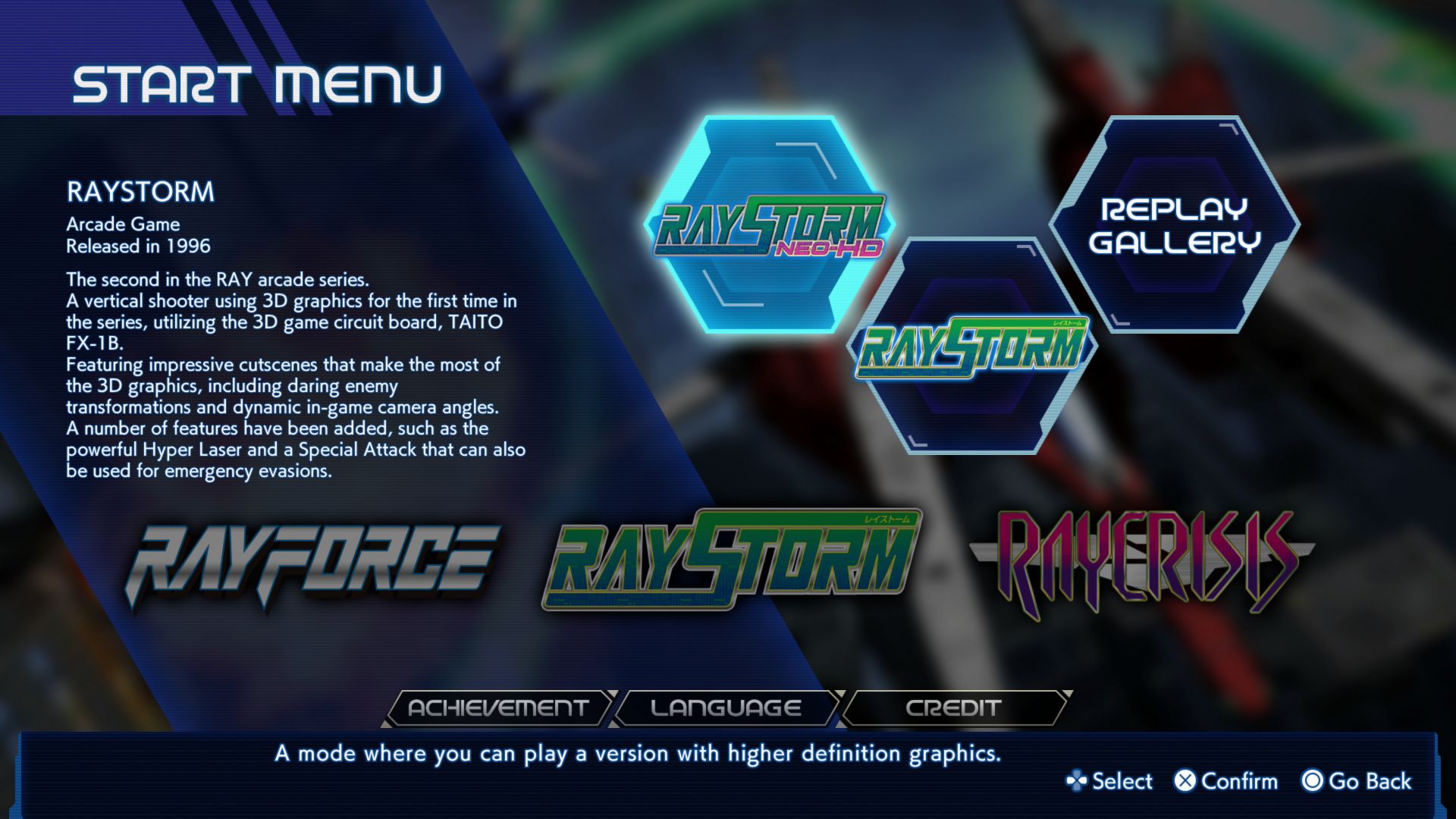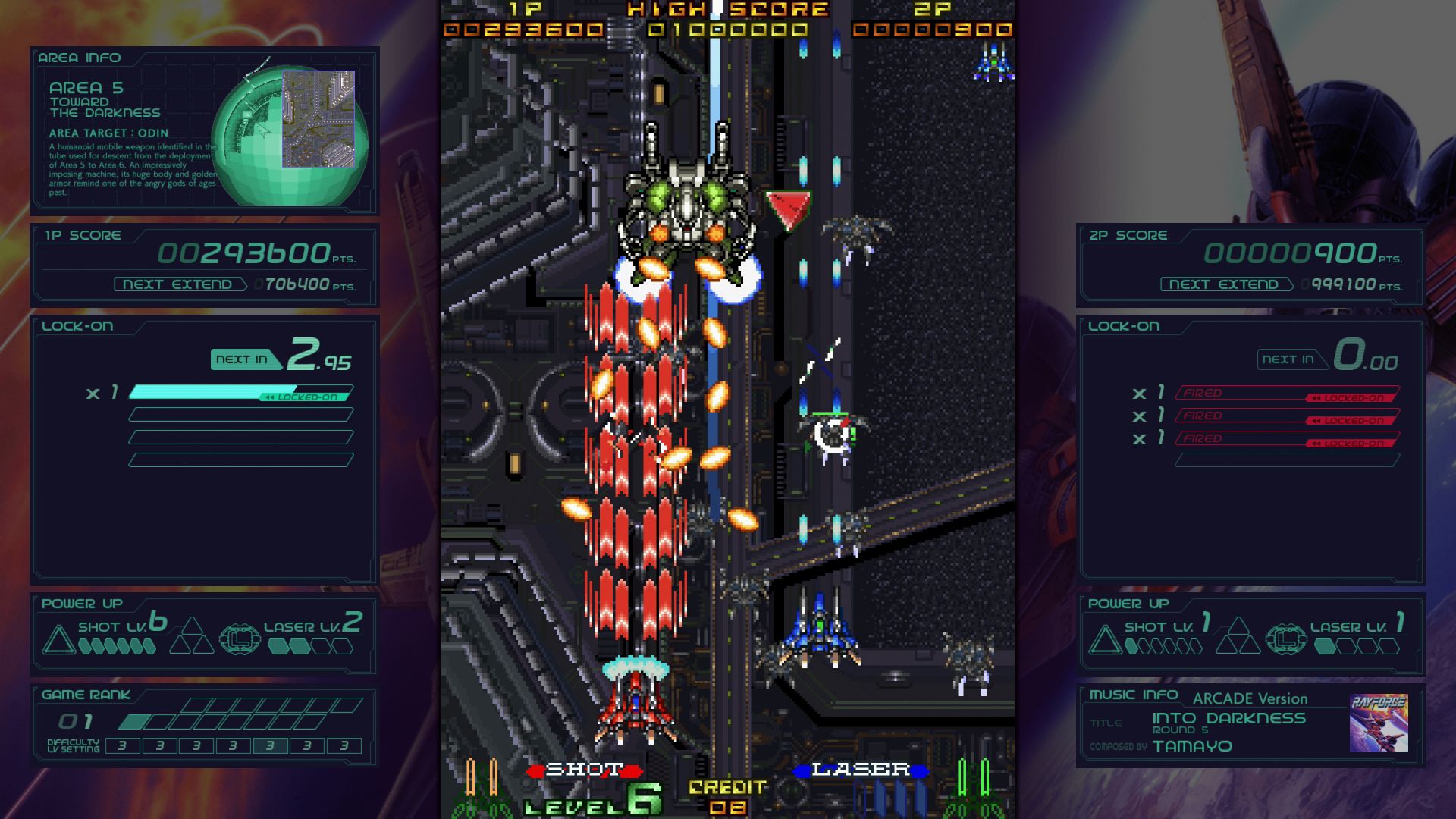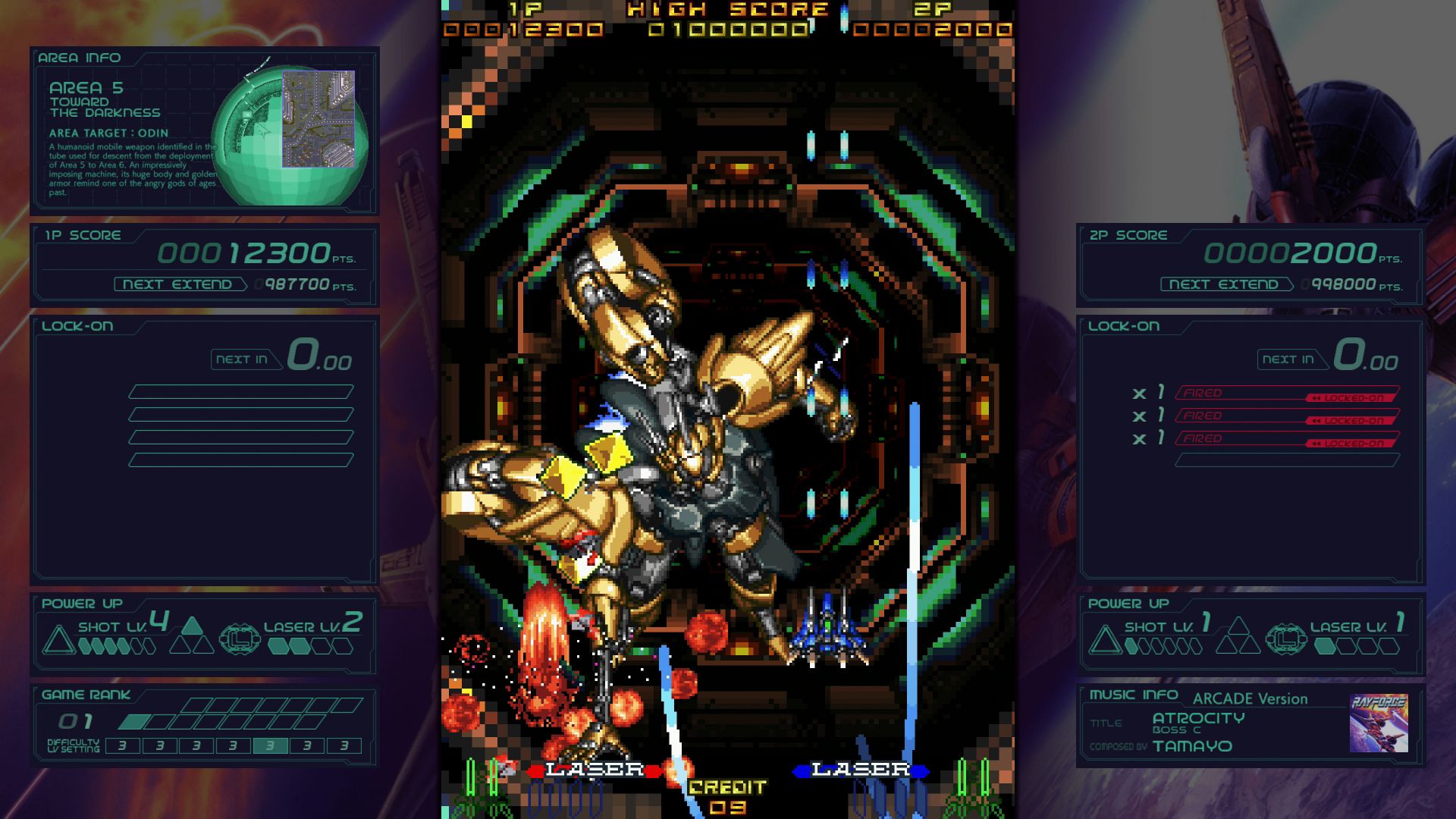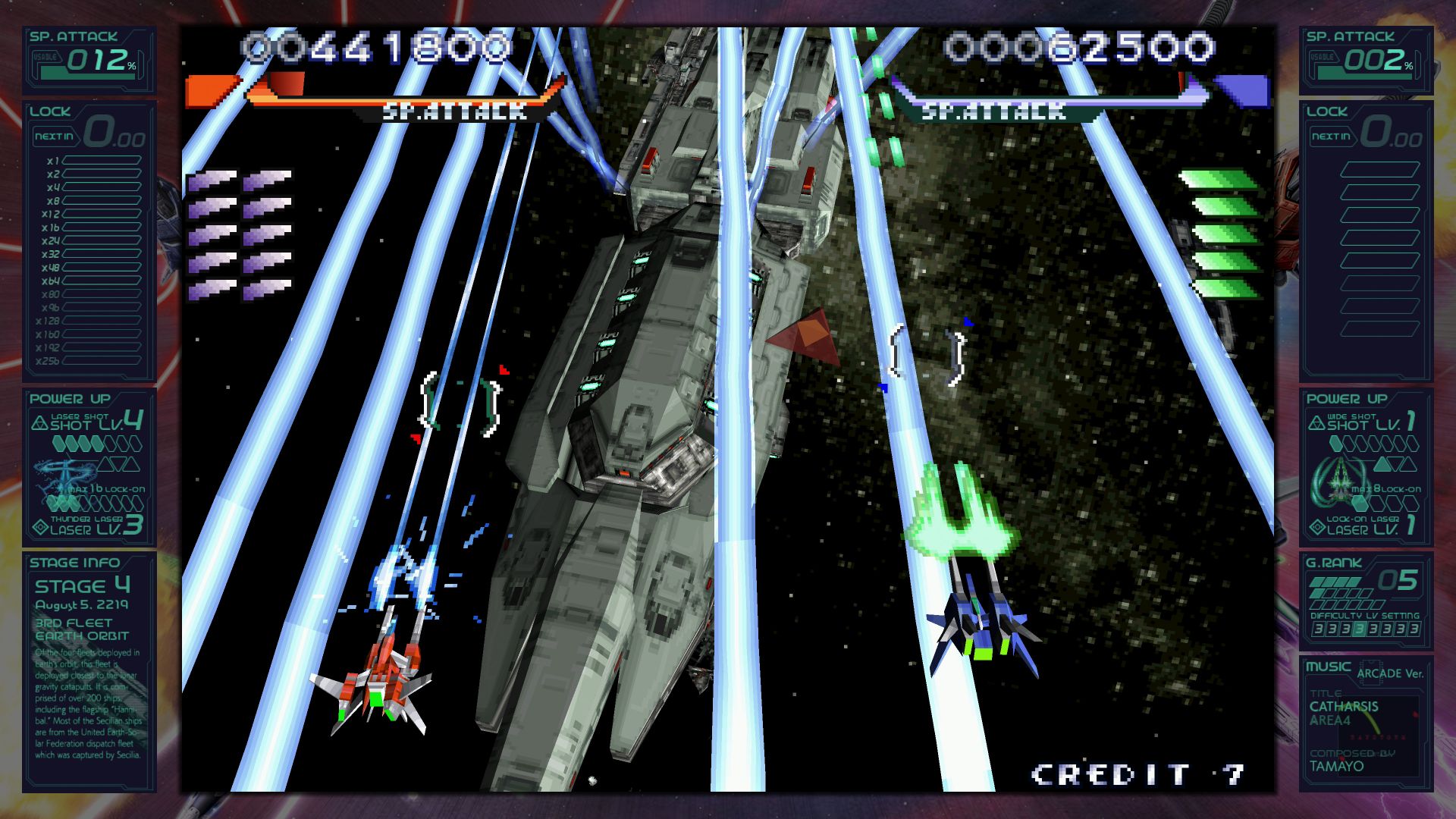Taito’s “Ray” series of vertically-scrolling shoot ‘em ups hasn’t seen nearly as many entries as their Darius series, but it retains a devoted following among fans of the genre. Comprised of RayForce, RayStorm, and RayCrisis, the Ray games are known for their lock-on mechanics that allow players to fire upon enemies in the foreground and background, excellent ship and mecha designs, and memorable music. ININ and M2’s Ray'z Arcade Chronology for PlayStation and Switch celebrates and preserves the series by collecting all three arcade games in one simple but slick package.
The collections’ main menu is very simple, allowing users to choose from the three games, view the helpful in-game Achievement/Trophy list, select a language, and view the credits. Upon selecting a game, players can choose to launch the regular or HD version (RayStorm and RayCrisis only), or view any replays that have been saved. The actual gameplay and presentation options are accessible after launching a game. No historical information has been provided, which is a shame given the series’ slightly niche status.

Within each game, pressing either trigger opens the game-specific menu. From there, you can create or load a save state, read the helpful in-game manual, view online rankings, or change the game’s impressive array of options. Controls can be customized for both players. Display options allow the screen to be resized, smoothing and scaling to be toggled, and a choice of three widescreen borders or no border. Sound allows the selection of two different soundtracks for each game (original or arranged) and for the optional inclusion of ambient arcade noise. The background noise doesn’t appeal to me, but it’s a cool inclusion, nonetheless. Finally, optional “gadgets” display useful information about power-ups, area names, song titles, and more.
All three games in the collection support drop-in, drop-out 2-player local co-op.
RayForce

The first game in the series is 1994’s RayForce (also known as Layer Section and Galactic Attack), which originally ran on Taito’s F3 arcade hardware. RayForce is not included in the similar but cheaper RayStorm X RayCrisis HD Collection, so Ray’z Arcade Chronology is the version to get if you want to own the full series. RayForce, unlike the other two games in the collection, does not have an “HD” version. That said, the original blend of 2D graphics and 3D effects still looks quite impressive, arguably more so than the polygonal visuals of the sequels. The backgrounds are filled with all manner of intricate details, parallax layers, and visual techniques that create a greater sense of depth than those of other 2D shooters.
RayForce begins and ends without any cinematics, as far as I can tell. Despite that strange omission, the game manages to express a fair level of personality simply through its futuristic environments and enemies. Flying through Earth and space-based cities, clouds and canyons, and numerous technology-laden tunnels is a genuinely memorable experience. Toss in some huge, mechanized enemies, and you get an intriguing future setting.

RayForce also establishes the gameplay basics that the sequels will improve upon. Players can fire regular shots forward to hit enemies on the same plane, but enemies in the foreground must be defeated with lock-on lasers. The number of enemies that can be locked onto at once is relatively small in this entry but can be increased by collecting power-ups. Unlike many shooters of its era, RayForce has no bomb mechanic, so lock-on lasers factor heavily into gameplay. In fact, the lock-on mechanic is relied upon a little too heavily here for my taste, but the balance improves in the sequels.
